Apple AirPods Max review: The ultimate expression of AirPods

The AirPods Max is a collection of numbers: 4 years in the making, 40mm drivers, 9 microphones, 9 sensors of all sorts, and 2 H1 chips. But the biggest number of them all is the price – $849.
As someone who spends his nights pondering his next DAC upgrade and what headphone I should get to replace my ageing LCD-3, I am well aware that wireless headphones with active noise cancellation and good sound don’t come cheap, but even I did a double-take when I saw the price.
It’s irrefutably expensive but Apple isn’t the first to charge such prices for wireless headphones – Beoplay H95 anyone? However, Apple’s standing in the industry surely means it will be the most scrutinised.
Regardless, the brand’s approach to high-end should mean the AirPods Max will be beautifully built and meticulously tuned. And the fact that the AirPods Max is already sold out for months even before it has hit retail is incontrovertible proof that there is a market out there.
But not everyone is comfortable buying S$800-plus headphones unseen so let’s take a closer look at the AirPods Max and see if it lives up to its lofty expectations.

Distinctive is probably the best word to describe the way the AirPods Max looks. The earcups are anodised aluminium and their curved edges certainly make them look pod-like.
They are connected to the headband by polished stainless steel telescoping arms that slide in and out smoothly but firmly so they stand in place once you’ve sized them to fit. The arms also have spring-loaded hinges that let the earcups rock back and forth so that they fit better.
The cups swivel so that the headphone folds flat.
The headband is most interesting. The structure is stainless steel and it’s covered in soft-touch rubber. Round the top is a “ breathable mesh knit canopy ” which is a clever design that mimics the effect of suspension-style headbands but with fewer components.
The headband is stiff and doesn’t fold, so the entire headphone only folds flat and not up like some of its rivals do.

The earpads are memory foam covered by a mesh fabric and are truly soft. They attach via magnets and can be easily replaced in the future when they wear out. However, replacements earpads are just as expensive as the headphones themselves at $95 pair .
An unfortunate consequence of using quality materials is that the AirPods Max are heavy. At 384g , they are considerably heavier than the competition – even if the competition uses mostly plastic. This is something readers new to high-end headphones will have to get used to.
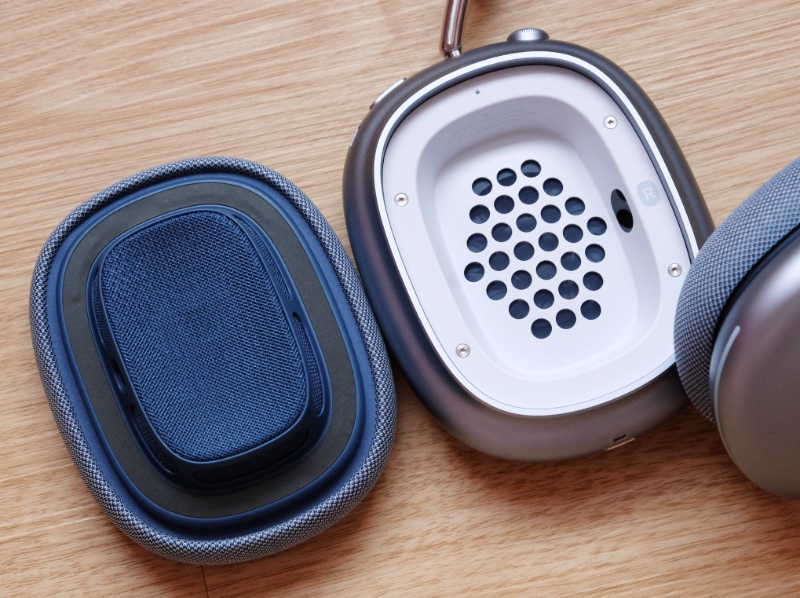
Luckily, the headband, as unusual as it looks, is effective in distributing weight across your head and the plush earpads certainly help. The clamping force is well-judged so I didn’t find the AirPods Max to be uncomfortable and could wear them for hours with little issue. I think most people will feel the same.
As comfortable as they may be, these aren’t headphones for exercising. They’ll slide off your head if you move too vigorously and I doubt you’ll want to get sweat on those fabric earpads and the mesh headband.
It isn’t water-resistant either – but then I can’t think of any over-ear wireless headphones that are. For exercising, you’ll want to stick to true wireless earbuds like the AirPods Pro .
Interestingly, these are the first AirPods to come in different colours. The safe options are obviously space grey and silver, while more adventurous folks can opt for green, sky blue, and pink. The headband and earpads are colour-matched.
My unit is sky blue and while I’m not overly fond of the colour (I think I will like space grey), I will concede that it is unique.


You don’t get many accessories. There’s a Lightning to USB-C cable for charging. Yes, the AirPods Max charges via Lightning, not USB-C.
I could rant about Apple’s port problems but I’m not going to. And while I’m not sure Lightning is the best option, the obvious upside is that it’s more convenient for iPhone owners.
There’s also the controversial carrying case. The outer section is a soft-touch rubbery material and the insides are lined with a velvet-like material that prevents it from scratching your expensive headphone. On its own, it looks faintly ridiculous.
The construction is also odd – a mishmash of bends and folds. And it looks like the rubbery outside material might get dirty easily. One thing that I do like about it is how it has separate sections for each earcup so they don’t bang against and scratch each other up when they are stowed away.
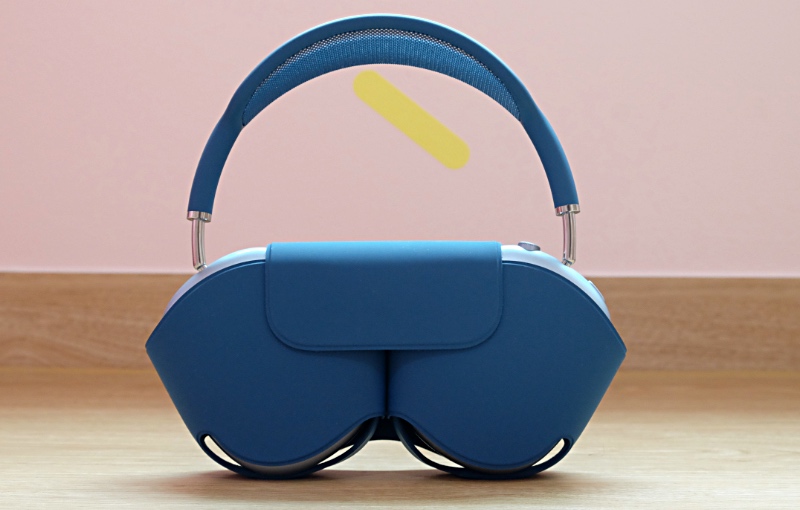
If a case is judged by its ability to offer protection, then this case fails. It only wraps around the earcups and even then not thoroughly, so much of the headphone is exposed. I’m not sure how many people will feel safe putting their $800-plus headphones into bags like this.
It’s only redeeming feature is that it automatically puts the headphone into a low-power state when they are stored away. I suspect there is going to be a booming industry for third-party AirPods Max cases.
At this point, you are probably wondering, what happens when travelling resumes and I want to plug these into a plane’s inflight entertainment system? Since there’s only a Lightning port, you’ll need a Lightning to 3.5mm audio cable. You won’t find this in the box because it is sold separately for S$49. Ouch.

Unlike some of its rivals, Apple has chosen to eschew any sort of fiddly touch controls on the AirPods Max. Instead, you control it using a Digital Crown (yes, like an Apple Watch) and a separate button. The crown manages playback controls, volume, and lets you activate Siri.
The button, called a noise control button, toggles between active noise cancellation and transparency modes.
The hardware feels very expensive and it works very well. The Digital Crown turns smoothly and allows for very precise and fine adjustments of volume; the noise control button changes mode instantaneously.
You might have noticed there’s no power button too. Instead, the AirPods Max rely on sensors to know when to go to sleep and when to power up. Sensors in the earcups know when you take them off and puts the headphones to sleep after a couple of minutes.
Placing them into their case puts them into an ultra-low-power mode that saves even more battery. Put them back on and they instantly connect to whatever device you are using. It sounds counterintuitive but it works wonderfully in practice.
One thing that annoys me most about wireless headphones is powering them up and then waiting to see if they connect; you don’t have this issue with the AirPods Max.

Easy setup has always been one of the selling points of AirPods and the AirPods Max is dead simple to set up. Thanks to two H1 chips (one in each earcup), you simply bring the AirPods Max near an iPhone or iPad and a prompt will pop up and ask if you want to pair it.
Answer to the affirmative and the AirPods Max gets paired and is ready to use not just on the iPhone or iPad but all devices associated with your iCloud account.
Integration with iCloud also enables automatic switching which routes the AirPods Max to whatever device you are using. For example, if you are listening to your Mac and a call comes in on your iPhone, the AirPods Max is supposed to automatically switchover.
And once your call is over, you can quickly switch back to your music on your Mac. It works most of the times and when it does, it feels like magic. But unfortunately, there were also times where it would be slow to switch or it didn’t switch over at all.

One last feature worth mentioning is spatial audio with dynamic head tracking. This isn’t new, it’s already available on the AirPods Pro since iOS 14 dropped. When spatial audio is enabled, the sound field stays fixed to your source device.
This means even if you turn your head or move away, the sound will still appear to come from your source device. It’s quite bizarre to experience it for the first time, but it does make it feel as if you are listening to a surround sound setup.
There are, however, some limitations. It only works on selected content encoded in 5.1, 7.1, and Dolby Atmos, and only on your iPhone and iPad. One can only hope this will be extended to Macs and Apple TV soon.

There are three modes to choose from: noise cancellation on, or off, and transparency mode. Transparency mode lets you listen to the world around and it’s hands down the best implementation of ambient sound I’ve heard on a wireless headphone.
Most implementations tend to sound muffled or digitised but not so with the AirPods Max. It sounds incredibly natural. What would have made the AirPods Max even better is if it had the equivalent of Sony’s Quick Attention mode, this would make it super easy to have quick conversations.
As things stand, you’ll need to pause whatever you are listening to using the Digital Crown and then press the noise control button, or lift the earcups off your ear.
The AirPods Max uses eight of its nine microphones for its active noise cancellation feature (the 9th mic is for voice calls). Three outward-facing mics on each earcup listen out for external noise while a single inward-facing mic on each earcup listens to sound within.
This noise data is then analysed by the H1 chip which then tells the driver to produce noise of an opposite frequency to cancel it out. This happens 200 times every second. The way it works is similar to the Sony WH-1000XM4, except the Sonys have a much higher sampling rate of over 700 times a second.
The result, however, is almost equally impressive. Obviously, I didn’t get to test the AirPods Max on a plane so I did the next best thing which was to play plane noises through my speakers and direct a fan at me. The amount of noise that the AirPods Max can cancel out is astounding.
But for human conversations, I think the Sonys are better. I suspect the higher sampling rate helps with higher frequency sounds and the Sonys' superiority in this respect was evident.
Nevertheless, when travel resumes and we are allowed back on planes, I think owners will be very happy with what the AirPods Max can do.
Active noise cancellation works well with the microphone too if you are using it to take voice calls or for teleconferencing. The audio quality is good although some folks commented that I sound a little nasal.

Apple’s advertised claim of 20 hours is mostly spot-on. I’ve been listening with active noise cancellation on and the volume set to around 55 per cent to 65 per cent, I managed to clock a bit over 19 hours before I had to charge.
It’s not the shortest and probably adequate for all but the longest of flights but there’s no running away from the fact that 20 hours is a good deal shorter than some rivals like the Sony WH-1000XM4, which can last for 30 hours.
Furthermore, the AirPods Max won’t work passively. You are completely out of action if the AirPods Max run out of juice. If it’s any consolation, when the headphones are flat, a five minutes charge is sufficient to get you 1.5 hours of listening time.
The lack of power button, however, does mean that the AirPods Max never truly switches off. So even when they are in the smart case, power does slowly drain away at a rate of a handful of percentage points every 12 or so hours.
I didn't see any difference even if I left them out of the case. At any rate, if you are planning to take them out with you, it's best to charge them up first.
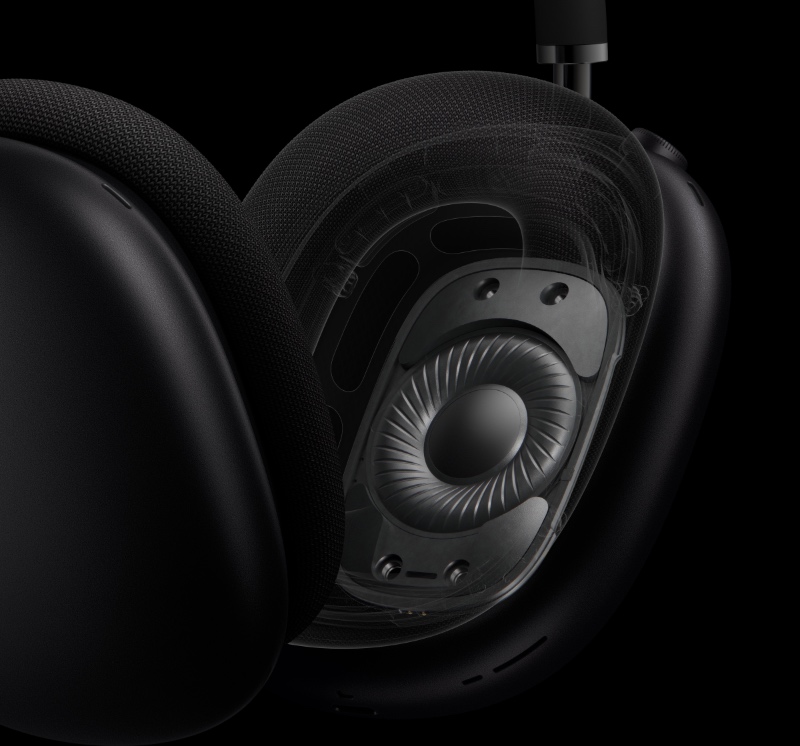
Like so many things that Apple makes, the drivers in the AirPods Max are custom-made. The drivers measure 40mm in diameter and have a dual neodymium ring magnet structure. The material of the diaphragm is unknown.
Slots in the earcups not only conceal the AirPods Max’s various microphones, but also act as vents to disperse air and reduce pressure build-up and unwanted resonances.
I need to also preface this section by talking about Adaptive EQ. The AirPods Max uses the internal mic and its H1 chip to measure and analyse the sound that’s going to your ears and adjusts the driver’s frequency response so that its sound closely matches its target tuning.
It does this to compensate for variances in fit and seal (wearing spectacles can sometimes dramatically reduce bass) so that it can deliver a consistent sound regardless of your anatomy.
Since Adaptive EQ cannot be disabled it should mean that everyone will hear the AirPods Max more or less alike since it intelligently adjusts to make up for variances in ear shapes and tries to adhere to its target tuning.
It should be no surprise that the AirPods Max sound fantastic. Tonally, it’s mostly balanced with slightly emphatic bass, ever-present mids, and crystalline highs. The entire spectrum is well represented. Bass, as I said, is slightly elevated but it’s remarkably clean yet impactful. It also extends impressively low for a dynamic driver headphone so bass notes sound full and rounded. Warren G’s Regulate is an especially tricky track because of its deep rumbling bassline but the AirPods Max handled it skillfully.
The mids and highs are impressively judged so vocals have the right amount of presence. Consequently, instruments like strings and pianos have adequate weight and sparkle. Crucially, it doesn’t sound piercing or fatiguing. How much all of this is down to the headphones’ stock tuning and how much of it is down to Apple’s clever “computational sound” hard to say (Adaptive EQ can’t be disabled) but tonally, the AirPods Max are outstanding.
It is technically capable too. Apple promised ultra-low distortion and the AirPods Max exhibited outstanding clarity at all volumes – as all high-end headphones should. There’s adequate separation too so instruments and components in tracks don’t get muddied up.
Closed-back headphones often present significant tuning challenges because their sealed enclosures cause unwanted resonances and sound reflections.
But thanks to it internals mics, active noise cancellation and Adaptive EQ, the AirPods Max doesn’t seem to suffer from these issues. It can’t hold a candle to open-back headphones and there’s some unevenness in the sound but it doesn’t detract from the overall experience.
Plus, I suspect it’s something only audio curmudgeons like me would bother to suss out. Its surprising smoothness and refinement certainly has its rivals beat in this area.
I should also point out that like the other AirPods, the AirPods Max maintain a strong connection to the source device with zero dropouts or loss in transmission.
You can also use the AirPods Max with a wired connection, but it doesn’t alter the way it sounds because it has to be powered anyways which means the amplification stays constant. Plus, Adaptive EQ is always on so it will always try to match its target tuning.
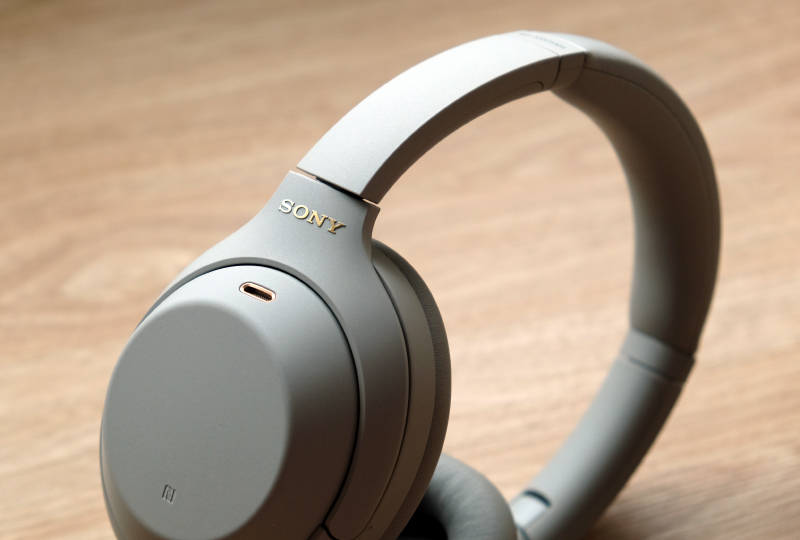
This is the question that’s on everyone’s mind. Sony released the WH-1000XM4 earlier this year and I thought it was excellent. At the risk of sounding like a cop-out, I don’t think one is definitively better than the other. It depends on your needs and how you intend to use them.
Sonically, I think the AirPods Max are superior. The tuning is more refined and sophisticated and the sound is cleaner and more detailed. The AirPods Max are also better built. With its metal construction and clever plush magnetic earpads, they feel like they could last a long time and they make the Sonys feel like disposable items. Noise-cancellation is just as good.
The Sonys, however, are more practical. They are lighter, they fold up nicely, and they come with a carrying case which makes them more portable. They also have a longer battery life and you can still listen to them even if they run out of juice.
Their noise cancellation is also better when dealing with human conversation. They also sound more incisive and dynamic, which some people may like – I prefer the more laidback and refined sound of the AirPods Max. And crucially, they are a lot cheaper.
At home, I would reach for the AirPods Max because of its superior sound quality. But if I was travelling, I would lean towards the Sonys because they are a lot more practical.

For the money, it’s only fair that we also compare the AirPods Max to high-end audiophile closed-backs. Granted, it’s not an apples to apples comparison but it’s not as if the AirPods Max can’t put up a fight.
Against this class of headphones, the AirPods Max only loses out in overall resolution and detail retrieval, of which a large part can be attributed to the limitations of wireless audio. It sounds like the AirPods Max drivers have a lot more to give.
Tonally, it has some of these headphones beat. Of course, none of these high-end wired options are as versatile as the AirPods Max nor can any of them compete in terms of isolation.
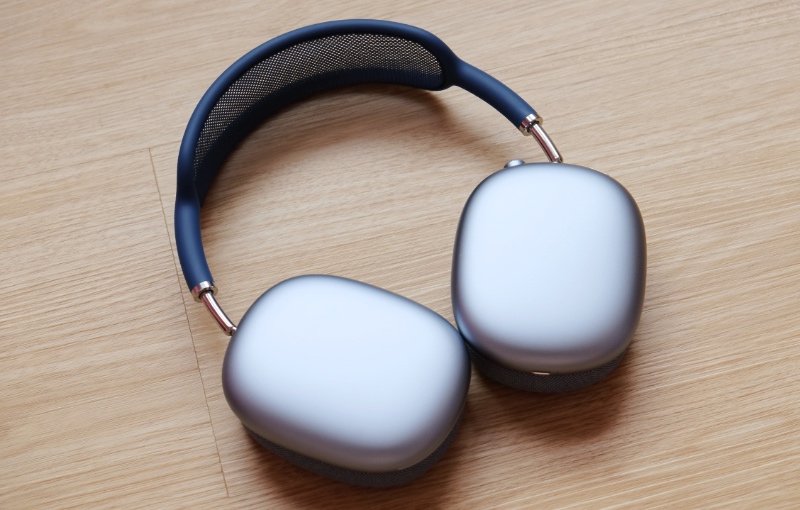
The AirPods Max headphones are wonderfully built, sound great, and have impressive noise cancellation features. They are also easy to set up and they work well with Apple devices.
I also like how Apple eschewed touch controls and opted for physical controls in the form of the Digital Crown and button.
They work reliably. Overall, the AirPod Max gets a lot of things right but it also misses the mark in some areas. As it is, they feel like a flawed genius. Apple could have absolutely nailed it if had done a couple of things differently.
They need to go back to the drawing board with the “smart case”. It offers little to no protection and serves no real purpose other than to put the headphones into a low power state. Perhaps this problem stems from the fact that Apple isn’t entirely sure what the AirPods Max are for.
Are they solely for home use or are they designed to be taken with you on the go and onto planes? If it’s the latter, then a hard carrying case has to be a standard accessory along with other ancillaries like an audio cable (to plug into the inflight entertainment system) and perhaps an airline adapter.
Especially for the money they are charging. And while they are at it, they should also rethink the 3.5mm jack and give users the ability to use it passively.
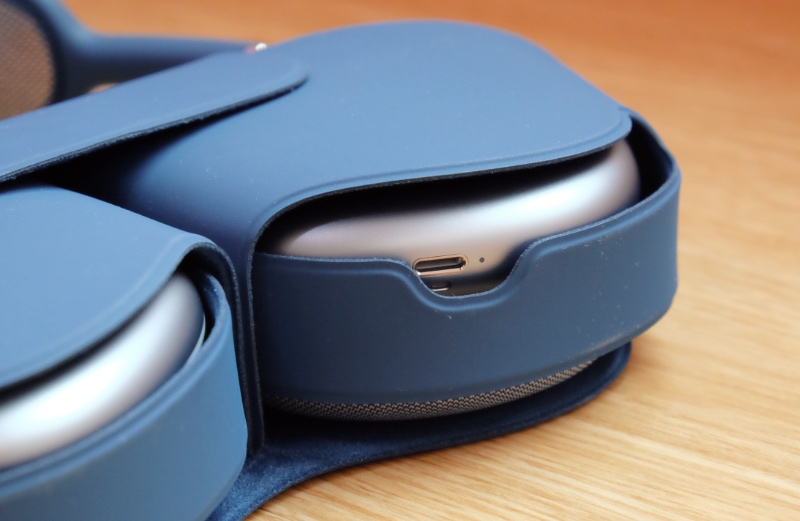
But maybe it doesn’t matter. Maybe it’s just me being pedantic and all people want is an expensive and cool-looking pair of headphones to peacock while they are out and about. After all, the AirPods Max were sold out well into the next year even before the first reviews were published.
Happily, the AirPods Max aren’t all show and no go, so I think these people will be very happy with their purchases.
This article was first published in Hardware Zone.